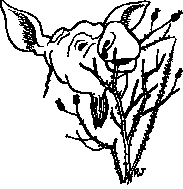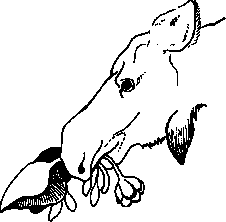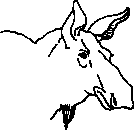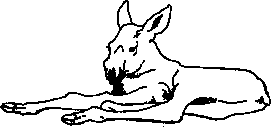| Khltkbr | Projects | Moose | Contents | Previous | Next |


MOOSE NEED ADEQUATE FOOD.
Moose are browsers and most of the foods they eat are woody plants. Moose primarily eat twigs in winter and leaves in summer. What species they eat depends on both the quality and quantity of the plants available. Moose need to become fat during the snow-free months so when winter comes, and food isn't as plentiful and nourishing, they have energy reserves. Moose gain up to 50% extra body weight by fall, only to lose it by spring.
Moose food grows in different geographical areas and elevations at different times of the year. This accounts for many of the seasonal movements of moose. The moose chomping ybur perennials in March may have been high up in the mountains in September.
MOOSE NEED SECURITY.
 Although moose are adaptable and habituate quickly to people, they are less stressed when they have undisturbed places to rest and feed. These areas should be relatively free of human activities. Moose also seek protection from bad weather, usually in wooded areas.
Although moose are adaptable and habituate quickly to people, they are less stressed when they have undisturbed places to rest and feed. These areas should be relatively free of human activities. Moose also seek protection from bad weather, usually in wooded areas.
 MOOSE NEED WlNTER RANGE.
MOOSE NEED WlNTER RANGE.
Availability of winter habitat is the most important factor limiting the size of a moose population. Moose need to winter in areas with less than three feet of snow and abundant willows, birch, and poplar shrubs. Shallow snow not only allows moose to move easily to good vegetation, but also makes them less vulnerable to predation.
These critical winter ranges are usually at lower elevations, and include areas within the cities of Homer, Soldotna, and Anchorage. They may also lie in valleys along rivers and streams. Unfortunately for moose, these same areas are very attractive to humans. The lower stretches of the Anchor, Deep Creek, Kenai, Swanson, Kasilof, Susitna, Matanuska,Yentna, and Knik Rivers are all important moose wintering areas. All are areas of increasing human development.
MOOSE NEED MATING AND CALVlNG AREAS.
Moose prefer certain geographical areas for mating and calving. Moose need access routes to these areas as well as to the other places they use daily and seasonally.
On the lower Kenai Peninsula, the higher elevations of Bald Mountain, Hill 26, and the Caribou Hills are important rutting and mating areas. In the central Kenai Peninsula the mountains bordering both Tustumena and Skilak Lakes are areas where large bulls congregate. In the Anchorage and MatanuskaValley areas, willow habitat just above tree line is critical to mating moose.
Calving usually takes place at lower elevations in snow-free areas, frequently close to towns and cities. Traditional calving areas are very important to moose survival. Many cows appear to calve in Anchorage, Eagle River, and Homer to avoid bears and wolves.

Contents | Previous | Next